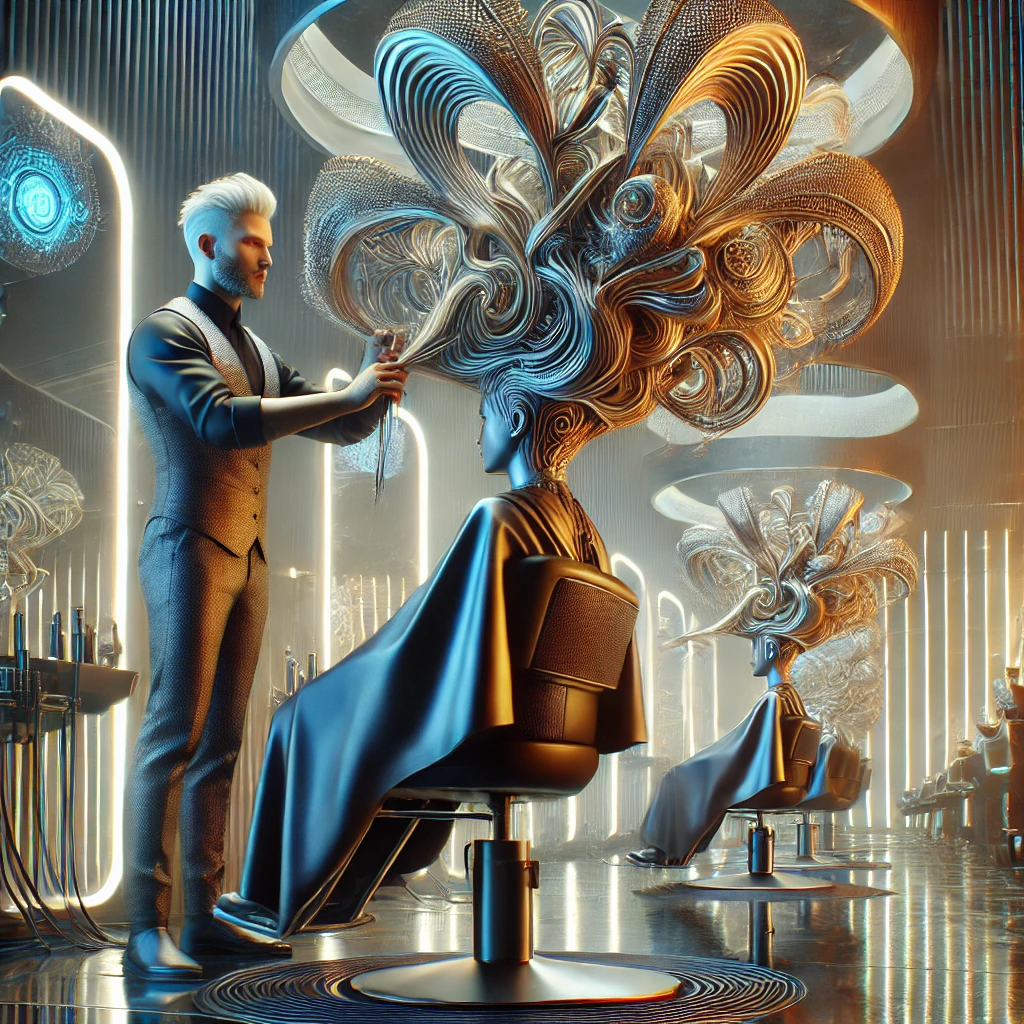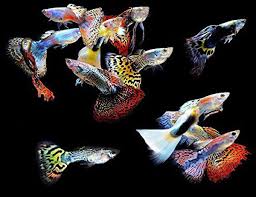The Evolution of Hair Sculpting as an Art Form
The Intersection of Hair and Art
Hair has always been more than just a biological feature; it is a canvas for self-expression, cultural identity, and creativity. Over the years, hairstyling has evolved from simple cuts and colors to intricate designs that push the boundaries of imagination. Enter hair sculpting—a revolutionary approach that transforms hair into three-dimensional art. This emerging trend has taken the beauty industry by storm, with stylists around the world showcasing their skills by turning hair into breathtaking masterpieces. From geometric patterns to lifelike sculptures, hair sculpting is redefining what it means to be a hairstylist in the modern era.
The Origins of Hair Sculpting
The concept of hair sculpting is not entirely new. Historically, hair has been used as a medium for artistic expression in various cultures. For instance, ancient Egyptians styled their hair into elaborate shapes to signify social status, while African tribes used intricate braiding techniques to tell stories and convey identity. However, the modern iteration of hair sculpting as an art form began to gain traction in the late 20th century. Pioneering stylists started experimenting with unconventional techniques, using hair as a sculptural material rather than just a styling element.
The rise of avant-garde fashion in the 1980s and 1990s played a significant role in popularizing hair sculpting. Designers and stylists collaborated to create bold, theatrical looks that complemented runway shows. This era saw the emergence of iconic hairstyles that defied traditional norms, such as asymmetrical cuts, exaggerated shapes, and gravity-defying structures. These early experiments laid the groundwork for the hair sculpting movement, inspiring a new generation of stylists to explore the artistic potential of hair.
The Tools and Techniques of Hair Sculpting
Hair sculpting requires a unique set of tools and techniques that go beyond traditional hairstyling. Stylists often use specialized combs, razors, and scissors to achieve precise cuts and shapes. Additionally, they rely on strong-hold products like gels, waxes, and sprays to maintain the structure of their designs. Some even incorporate unconventional materials, such as wire or fabric, to enhance the sculptural effect.
One of the most popular techniques in hair sculpting is layering. By cutting hair into multiple layers of varying lengths, stylists can create depth and dimension, giving the illusion of movement or texture. Another common method is carving, which involves shaving or etching patterns directly into the hair. This technique is often used to create geometric designs or intricate motifs. For more complex sculptures, stylists may use a combination of cutting, braiding, and molding to achieve the desired shape.
The Role of Technology in Hair Sculpting
Advancements in technology have played a crucial role in the rise of hair sculpting. High-quality cameras and social media platforms have allowed stylists to showcase their work to a global audience, inspiring others to experiment with this art form. Additionally, digital tools like 3D modeling software have enabled stylists to visualize their designs before bringing them to life. This has opened up new possibilities for creativity, allowing artists to push the boundaries of what can be achieved with hair.
Another technological innovation that has impacted hair sculpting is the development of advanced hair products. Modern styling gels and sprays offer superior hold and flexibility, making it easier for stylists to create and maintain intricate designs. Furthermore, the availability of high-quality hair extensions and wigs has expanded the range of materials that stylists can work with, enabling them to create larger and more elaborate sculptures.
The Artistic Potential of Hair Sculpting
Hair sculpting represents a fusion of art and hairstyling, challenging traditional notions of beauty and self-expression. By treating hair as a sculptural medium, stylists are able to create works of art that are both visually stunning and deeply personal. As this trend continues to gain momentum, it is clear that hair sculpting is more than just a passing fad—it is a testament to the limitless creativity of the human spirit.
The Cultural Impact of Hair Sculpting
Hair as a Reflection of Culture and Identity
Hair has always been a powerful symbol of cultural identity, social status, and personal expression. From ancient civilizations to modern societies, the way people style their hair often reflects their values, beliefs, and aspirations. In recent years, hair sculpting has emerged as a dynamic art form that not only showcases individual creativity but also celebrates cultural diversity. By blending traditional techniques with contemporary aesthetics, stylists are using hair sculpting to tell stories, challenge stereotypes, and redefine beauty standards.
Hair Sculpting in Different Cultures
Hair sculpting draws inspiration from a wide range of cultural traditions, each with its own unique approach to hairstyling. For example, African hair braiding has long been celebrated for its intricate patterns and symbolic meanings. In many African communities, braids are used to convey messages about a person’s age, marital status, or social role. Hair sculpting builds on this tradition by incorporating three-dimensional elements, such as beads, shells, and other adornments, to create even more elaborate designs.
Similarly, Japanese hair styling has influenced the hair sculpting movement with its emphasis on precision and artistry. Traditional Japanese hairstyles, such as the geisha’s elaborate updo, are known for their intricate construction and attention to detail. Modern hair sculptors have adapted these techniques to create avant-garde looks that combine traditional elegance with futuristic flair.
In Western cultures, hair sculpting has been embraced as a form of self-expression and rebellion. The punk movement of the 1970s and 1980s, for instance, popularized bold, unconventional hairstyles that challenged societal norms. Today, hair sculpting continues this legacy by pushing the boundaries of what is considered acceptable or beautiful.
Hair Sculpting and Gender Identity
One of the most significant cultural impacts of hair sculpting is its role in challenging traditional gender norms. Historically, hairstyles have been heavily gendered, with certain cuts and styles being associated with masculinity or femininity. Hair sculpting disrupts these conventions by offering a more fluid and inclusive approach to hairstyling.
For example, androgynous hairstyles that blend masculine and feminine elements have become increasingly popular in recent years. These styles often feature bold, geometric shapes that defy traditional gender categories. By embracing hair sculpting, individuals are able to express their gender identity in ways that feel authentic and empowering.
Hair Sculpting as a Form of Activism
In addition to its cultural and aesthetic significance, hair sculpting has also become a powerful tool for activism. Many stylists use their work to raise awareness about social and political issues, such as racial inequality, environmental sustainability, and LGBTQ+ rights. For instance, some artists create sculptures that highlight the beauty of natural hair, challenging the stigma surrounding Afro-textured hair. Others use their designs to make statements about climate change or consumerism, incorporating recycled materials or symbolic imagery into their work.
The Cultural Significance of Hair Sculpting
Hair sculpting is more than just a trend—it is a reflection of the diverse and dynamic world we live in. By drawing on cultural traditions, challenging gender norms, and addressing social issues, this art form has the power to inspire, educate, and unite people from all walks of life. As hair sculpting continues to evolve, it will undoubtedly play an important role in shaping the future of beauty and self-expression.
The Creative Process Behind Hair Sculpting
The Art and Science of Hair Sculpting
Hair sculpting is a unique blend of artistry and technical skill, requiring both creativity and precision. Unlike traditional hairstyling, which focuses on enhancing natural features, hair sculpting involves transforming hair into a three-dimensional work of art. This process requires a deep understanding of hair texture, structure, and behavior, as well as a keen eye for design. In this section, we will explore the creative process behind hair sculpting, from concept development to execution.
Concept Development: From Inspiration to Design
The first step in the hair sculpting process is concept development. This involves gathering inspiration, brainstorming ideas, and creating a design plan. Stylists often draw inspiration from a variety of sources, including nature, architecture, fashion, and fine art. For example, a stylist might be inspired by the geometric patterns of a honeycomb or the fluid lines of a waterfall.
Once the concept is finalized, the stylist creates a detailed design plan. This may involve sketching the design on paper, creating a digital mockup, or even building a small-scale model. The design plan serves as a blueprint for the sculpture, outlining the shape, texture, and overall aesthetic of the final piece.
Preparation: Choosing the Right Hair and Tools
The next step in the hair sculpting process is preparation. This involves selecting the right hair and tools for the project. Depending on the design, the stylist may work with natural hair, extensions, or wigs. The choice of hair is crucial, as different textures and lengths will affect the final outcome. For example, curly hair may be more suitable for creating volume and texture, while straight hair may be better for achieving clean, sharp lines.
In addition to hair, the stylist must also choose the right tools and products. This may include scissors, razors, combs, and styling products like gels, waxes, and sprays. Some stylists also use unconventional tools, such as knitting needles or sculpting clay, to achieve specific effects.
Execution: Bringing the Design to Life
The execution phase is where the magic happens. This is when the stylist transforms the design plan into a tangible sculpture. The process can be time-consuming and labor-intensive, requiring a high level of skill and attention to detail.
One of the key challenges in hair sculpting is maintaining the structure of the design. Unlike traditional hairstyles, which are designed to be worn and styled over time, hair sculptures are often temporary and fragile. To ensure the sculpture holds its shape, the stylist must use strong-hold products and techniques that provide stability without compromising the design.
Finishing Touches: Adding Details and Refinements
The final step in the hair sculpting process is adding finishing touches. This may involve refining the shape, adding color or texture, or incorporating additional elements like beads, feathers, or fabric. These details can elevate the sculpture, adding depth and complexity to the design.
Once the sculpture is complete, the stylist may photograph or film the piece to document their work. This not only serves as a portfolio piece but also allows the stylist to share their creation with a wider audience.
The Artistry of Hair Sculpting
Hair sculpting is a testament to the creativity and skill of hairstylists. By combining artistic vision with technical expertise, these artists are able to transform hair into stunning works of art. The creative process behind hair sculpting is both challenging and rewarding, requiring a deep understanding of hair and a passion for innovation. As this art form continues to evolve, it will undoubtedly inspire new generations of stylists to push the boundaries of what is possible with hair.
The Future of Hair Sculpting
The Endless Possibilities of Hair Sculpting
As hair sculpting continues to gain popularity, it is clear that this art form has a bright future. With advancements in technology, changes in cultural attitudes, and the growing influence of social media, the possibilities for hair sculpting are virtually limitless. In this final section, we will explore the trends and innovations that are shaping the future of hair sculpting, as well as the challenges and opportunities that lie ahead.
Trends Shaping the Future of Hair Sculpting
One of the most exciting trends in hair sculpting is the integration of technology. Augmented reality (AR) and virtual reality (VR) are being used to create immersive hair sculpting experiences, allowing clients to visualize their designs in real-time. Additionally, 3D printing is being explored as a way to create custom hair accessories and extensions, opening up new possibilities for creativity.
Another trend is the growing emphasis on sustainability. As consumers become more conscious of their environmental impact, stylists are exploring eco-friendly materials and techniques. This includes using biodegradable products, recycling hair waste, and incorporating natural elements like flowers and leaves into their designs.
The Role of Social Media in Hair Sculpting
Social media has played a pivotal role in the rise of hair sculpting, providing a platform for stylists to showcase their work and connect with a global audience. Platforms like Instagram, TikTok, and YouTube have become virtual galleries, where artists can share their creations and inspire others.
The viral nature of social media has also contributed to the rapid spread of hair sculpting trends. A single post or video can spark a wave of imitations, leading to the widespread adoption of new styles and techniques. This has created a dynamic and ever-evolving landscape, where innovation is constantly rewarded.
Challenges and Opportunities in Hair Sculpting
Despite its growing popularity, hair sculpting faces several challenges. One of the main obstacles is the lack of formal training and education. While traditional hairstyling programs teach basic cutting and coloring techniques, few offer specialized training in hair sculpting. This has led to a skills gap, with many stylists learning through trial and error or online tutorials.
Another challenge is the perception of hair sculpting as a niche or avant-garde art form. While it has gained a dedicated following, it is still not widely understood or appreciated by the general public. This limits its commercial potential and makes it difficult for stylists to make a living solely from hair sculpting.
However, these challenges also present opportunities for growth and innovation. As more stylists embrace hair sculpting, there is a growing demand for specialized training and resources. This has led to the development of workshops, online courses, and certification programs, making it easier for aspiring artists to learn the craft.
The Enduring Legacy of Hair Sculpting
Hair sculpting is more than just a trend—it is a transformative art form that has the power to inspire, challenge, and unite. By pushing the boundaries of what is possible with hair, stylists are redefining beauty and self-expression in ways that were once unimaginable. As we look to the future, it is clear that hair sculpting will continue to evolve, driven by innovation, creativity, and a passion for artistry. Whether it is through cutting-edge technology, sustainable practices, or cultural exploration, the possibilities for hair sculpting are truly endless.










